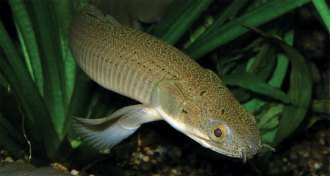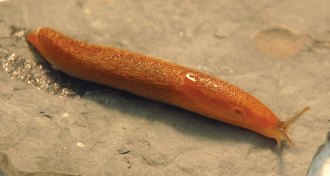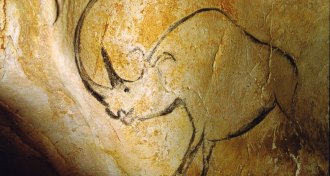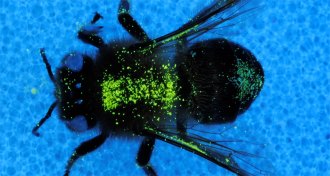Life
Sign up for our newsletter
We summarize the week's scientific breakthroughs every Thursday.
-
 Animals
Animals3-D scans of fossils suggest new fish family tree
Analysis of specimens from China implies ray-finned fishes evolved later than previously thought.
-
 Animals
AnimalsAnimal goo inspires better glue
Researchers are turning to nature to create adhesives that work in the wet environment of the human body.
-
 Animals
AnimalsA researcher reveals the shocking truth about electric eels
A biologist records the electrical current traveling through his arm during an electric eel’s defensive leap attack.
-
 Health & Medicine
Health & MedicineMicrobes hobble a widely used chemo drug
Bacteria associated with cancer cells can inactivate a chemotherapy drug.
-
 Genetics
GeneticsTwo artificial sweeteners together take the bitter out of bittersweet
Some artificial sweeteners are well known for their bitter aftertastes. But saccharin and cyclamate are better together, and now scientists know why.
-
 Paleontology
PaleontologyLike sea stars, ancient echinoderms nibbled with tiny tube feet
An ancient echinoderm fossil preserves evidence of tube feet like those found on today’s sea stars.
-
 Life
LifeWhen a fungus invades the lungs, immune cells can tell it to self-destruct
Immune system resists fungal infection by directing spores to their death.
-
 Neuroscience
NeuroscienceBrain chemical lost in Parkinson’s may contribute to its own demise
A dangerous form of the chemical messenger dopamine causes cellular mayhem in the very nerve cells that make it.
-
 Animals
AnimalsWhy bats crash into windows
Smooth, vertical surfaces may be blind spots for bats and cause some animals to face-plant, study suggests.
-
 Animals
AnimalsWhy bats crash into windows
Smooth, vertical surfaces may be blind spots for bats and cause some animals to face-plant, study suggests.
-
 Paleontology
PaleontologyWoolly rhinos may have grown strange extra ribs before going extinct
Ribs attached to neck bones could have signaled trouble for woolly rhinos, a new study suggests.
By Susan Milius -
 Animals
AnimalsPollen hitches a ride on bees in all the right spots
Flower reproduction depends on the pollen that collects in hard-to-reach spots on bees, a new study shows.